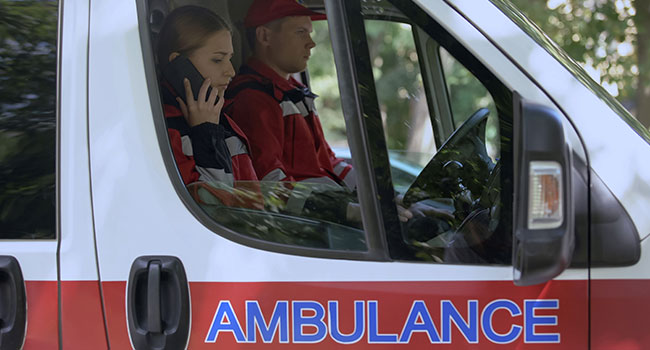
New Hampshire Hospital Using New Tech to Improve Emergency Response Communication
Exeter Hospital in Exeter, N.H., is using new technology in its Emergency Department to improve communication between emergency medical technicians (EMTs) in the field and in the facility’s emergency department.
- By Jessica Davis
- June 28, 2019
Exeter Hospital in Exeter, N.H., is using new technology in its Emergency Department to improve communication between emergency medical technicians (EMTs) in the field and in the facility’s emergency department.
According to Exeter Hospital paramedic Eric Jaeger, the hospital is the first in the state to use this new tech.
“In the past two-years, Exeter Hospital has been working on a campaign of EMS engagement, to try and improve communication between us and the various departments and agencies that bring in patients,” Jaeger said. “We want to offer them better access to the emergency department and better ability to swap out equipment. We have worked to enhance our stroke services and this new service will go a long way to achieving our goals of improving the way we work with local EMS services.”
Currently, EMTs at local fire departments call the hospital from the ambulance to provide information on the patient they’re bringing to the facility. Exeter has acquired an app called Twiage, which the hospital staff and Exeter Hospital EMTs will use for free, and which will be offered to area emergency services that bring patients to Exeter.
Exeter Hospital Emergency Services Manager Laura Thibeault said the Twiage system is a brand-new platform.
“We heard about it from our peers in EMS services and we took a look at it,” Thibeault said. “It will make what we all do faster and more efficient.”
According to Jaeger, another hospital in a different state has reported that they’ve been able to reduce the time it takes them to get stroke patients from their home into vital CT scans.
Twiage allows EMS and hospital staff to communicate directly, one-on-one. This allows care for critical patients like stroke or trauma victims to begin sooner and be more efficient.
“Historically, communication has been by radio, or, more recently phone,” Jaeger said. “That can be challenging due to signals and other coverage issues. There is also a concern for privacy, who can hear the exchange since it goes out over a public frequency. Phone conversations need to be in real time. It’s not like you can leave a message if the nurse is tied up.”
Jaeger said Twiage is available on both Android and iPhone. While the app needs a signal in order to work, it doesn’t require much signal—and if the signal can’t get through, the app will keep trying, allowing the EMT to keep helping their patient.
“You tap a couple of buttons and give information,” he said. “I can do this from the patient’s bedside, before they are even in the ambulance. It is essentially a text conversation where we can ask questions back and forth. We can tell the hospital when symptoms began, what the patient’s blood glucose levels are and whatever else is needed. Care starts sooner and the hospital staff can be ready as soon as the patient arrives. One thing that takes time is that it is required that the patient be registered on arrival at the hospital. With this app, I can just send them an image of the patient’s license. They can take care of registering the patient. That happens before we even leave the home.”
Jaeger also said that the app uses real-time GPS, allowing the hospital to track the ambulance location and anticipate its arrival.
According to Thibeault, hospital staff can access the patient’s prior medical records if they’ve been a patient at Exeter Hospital before. The system is also HIPAA compliant and patient privacy is protected. The patient’s personal information is deleted once the case is delivered to the hospital.
“We had our own internal IT department look at this thoroughly,” Thibeault said. “It has been through the wringer as far as checking the security, so we feel comfortable using it. Also, while there are no names, data collection is easier because we can go into the program and look at the numbers of strokes, of heart attacks and other conditions.”
Jaeger said he hopes other area medical services and hospitals start using Twiage, as improving communication can only help everyone.
“We are offering this at no cost to our area services, but the choice to use it is theirs,” Jaeger said. “We will be maintaining our radio and telephone communication lines, and no EMS provider will be forced to use this new technology, but we believe Twiage offers significant advantages for EMS providers, for the hospital, and for our patients. Ultimately, we see the technology as strengthening the partnership and engagement between Exeter Hospital and EMS.”